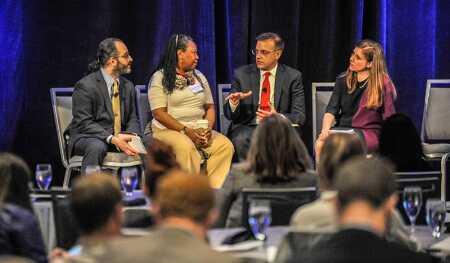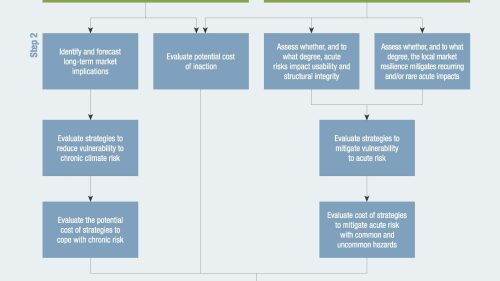Lisa Belkin’s book, Show Me a Hero, was first published in 1999, leading to a 2015 HBO six-part miniseries that dramatized what happened when Yonkers, New York, was ordered by a federal judge in 1985 to end its practice of racially segregating its population through its public housing program and school system. Yonkers had concentrated its public housing within a single square mile, effectively forcing residents to endure substandard neighborhood schools, and was sued by both the local chapter of the National Association for the Advancement of Colored People (NAACP) and the U.S. Justice Department for violating the Fair Housing Act and the Fourteenth Amendment.
For many, the HBO series was their first encounter with the Yonkers story, which vividly portrays the interpersonal conflict and political fallout that resulted from integrating low-income minority residents into a white, middle-class neighborhood. To Belkin, this 30-year-old story could not be more relevant than it is today. Communities across the United States—urban and suburban alike—are grappling with integrating neighborhoods where people from different income levels and racial backgrounds can live in harmony and have the same access to opportunity, she said in a keynote presentation that opened the ULI Housing Opportunity Conference held last week in Boston.
Belkin, a former New York Times magazine writer and now senior national correspondent at Yahoo! News, reflected on just how current the Yonkers case was when the miniseries aired in August 2015. Production of the series was bookended by the racial unrest that grew out of teenager Michael Brown’s killing by a police officer in Ferguson, Missouri, in August 2014 and protests in Baltimore in April 2015 after 25-year-old Freddie Gray died in police custody.
“They started filming during Ferguson, and they edited during Baltimore,” she said. “They were very aware of this on the set, that they were creating a piece of history that was also achingly contemporary. These issues have, if anything, become far more resonant since I wrote the book, and more resonant since the events happened. . . . There was this constant feeling on the set that it was both a re-creation of the past and an evocation of, in a lot of ways, the present.”
Also in 2015: the U.S. Supreme Court ruled that states and localities could still be held in violation of the Fair Housing Act if their public housing programs created disparate impacts—even without intending to be discriminatory. And yet while public policies and court orders are necessary as blunt instruments of change, what ultimately creates shifts in attitudes are one-on-one encounters and personal relationships with those who are different from us, Belkin said. “The only solution may be when people get to meet the people they think they hate.”
Now that Show Me a Hero has gained a much wider audience, a question Belkin is frequently asked is: Who is the hero of this story? Ultimately, she said, several heroes emerged: Mary Dorman, a white homeowner who went from being a vociferous opponent of desegregation to its fiercest advocate and lifelong friend to her new black and Latino neighbors; Nick Waciscko, an ambitious 20-something mayor who campaigned against the court order leading up to his election but then had to slog through its implementation after winning; or the public housing residents themselves—nearly all women and children—who moved across town for better opportunities but had to suffer the suspicion of their white neighbors, their inner doubts, and the unfamiliarity of a new neighborhood.
Another perennial question raised by the story is whether the residents’ lives dramatically improved as a result of moving into a more affluent neighborhood. In many ways, “emphatically yes,” Belkin said, and in other ways, not. Housing was just one factor in lives that were complicated by other struggles. “There is no pure happy ending in real life,” she said. And at the macro level, did building fewer than 1,000 units of affordable housing racially integrate a city of nearly 200,000 people? Hardly. “It was never going to integrate the city,” Belkin said.
Following Belkin’s talk, a panel of housing experts took up the issues about economic mobility and racial integration raised by Show Me a Hero. One question was whether it is better to focus on improving schools, housing, transit, and other services in struggling neighborhoods or provide low-income people greater choice and mobility—say, in the form of vouchers—to move to higher-opportunity neighborhoods where all of these attributes are better.

From left to right: Ethan Handelman, vice president for policy and advocacy at the National Housing Conference; Chrystal Kornegay, undersecretary of the Massachusetts Dept. of Housing and Community Development; Mark Linton, president of Linton Strategies and former executive director of the White House Council on Strong Cities, Strong Communities; and Alexandra Notay, policy director of ULI UK, speaking at the ULI Housing Opportunity Conference in Boston.
Given that nearly 14 million people live in areas of concentrated poverty, and moving them all to better neighborhoods is not only unrealistic, but not what they want. “How do we also connect the opportunity conversation to where [low-income people] live now?” asked moderator Ethan Handelman, vice president for policy and advocacy at the National Housing Conference.
Integrating a high-opportunity neighborhood places a huge psychological burden on the low-income people who are forced to fit in, said Chrystal Kornegay, undersecretary of the Massachusetts department of housing and community development. “It’s really, really hard to be the only . . . fill in the blank,” particularly for young people making their way in the world.
“The real question is about choice, and for the people who want choice, we have to create opportunity for them to do that,” Kornegay said. “But for the people who don’t, isn’t it more cost-effective to improve the schools in a lower-opportunity community than to go a high-opportunity community and have conversations around how people need to change and be different? We have to figure out how to do both. Politics . . . always drives us to the either/or place. We have to have a conversation that is about both/and.”





